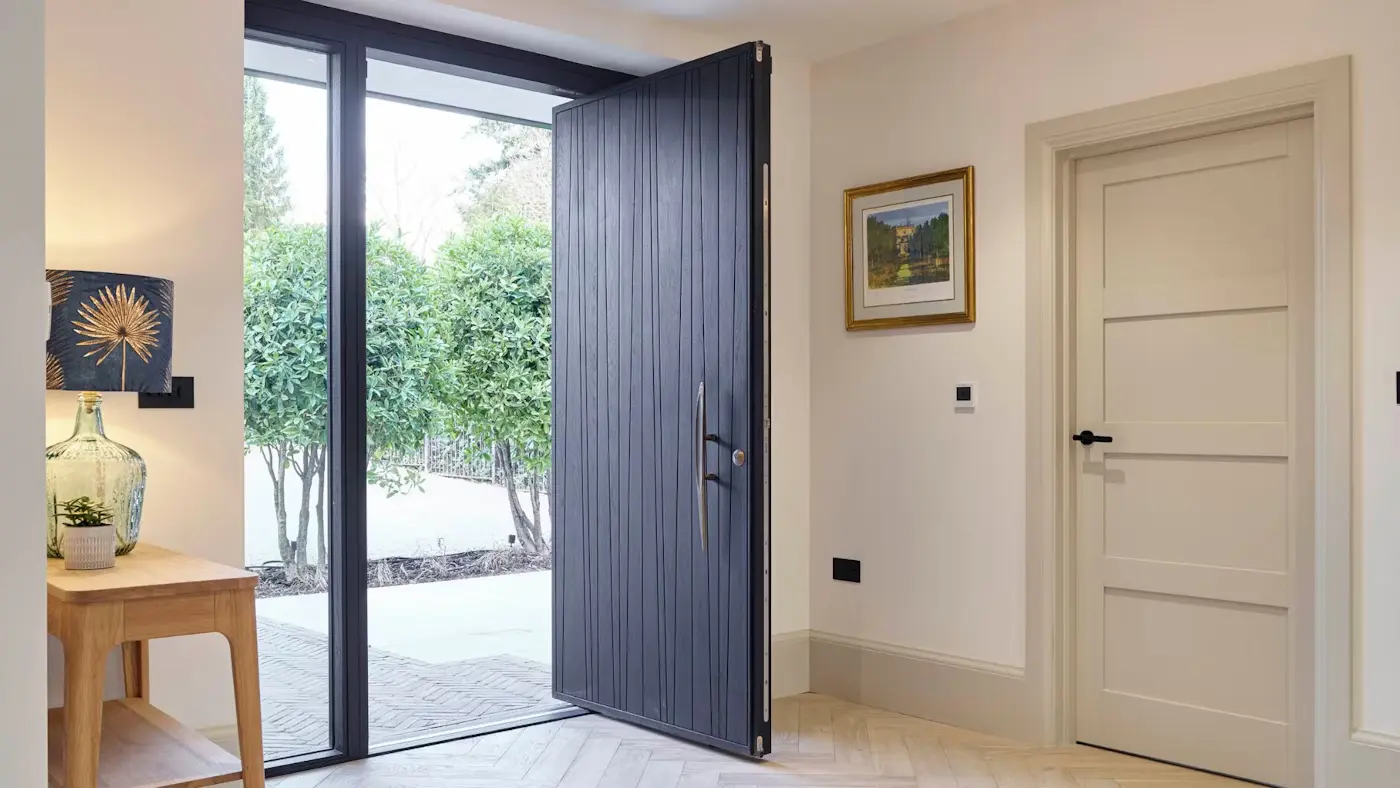What is the inside door?
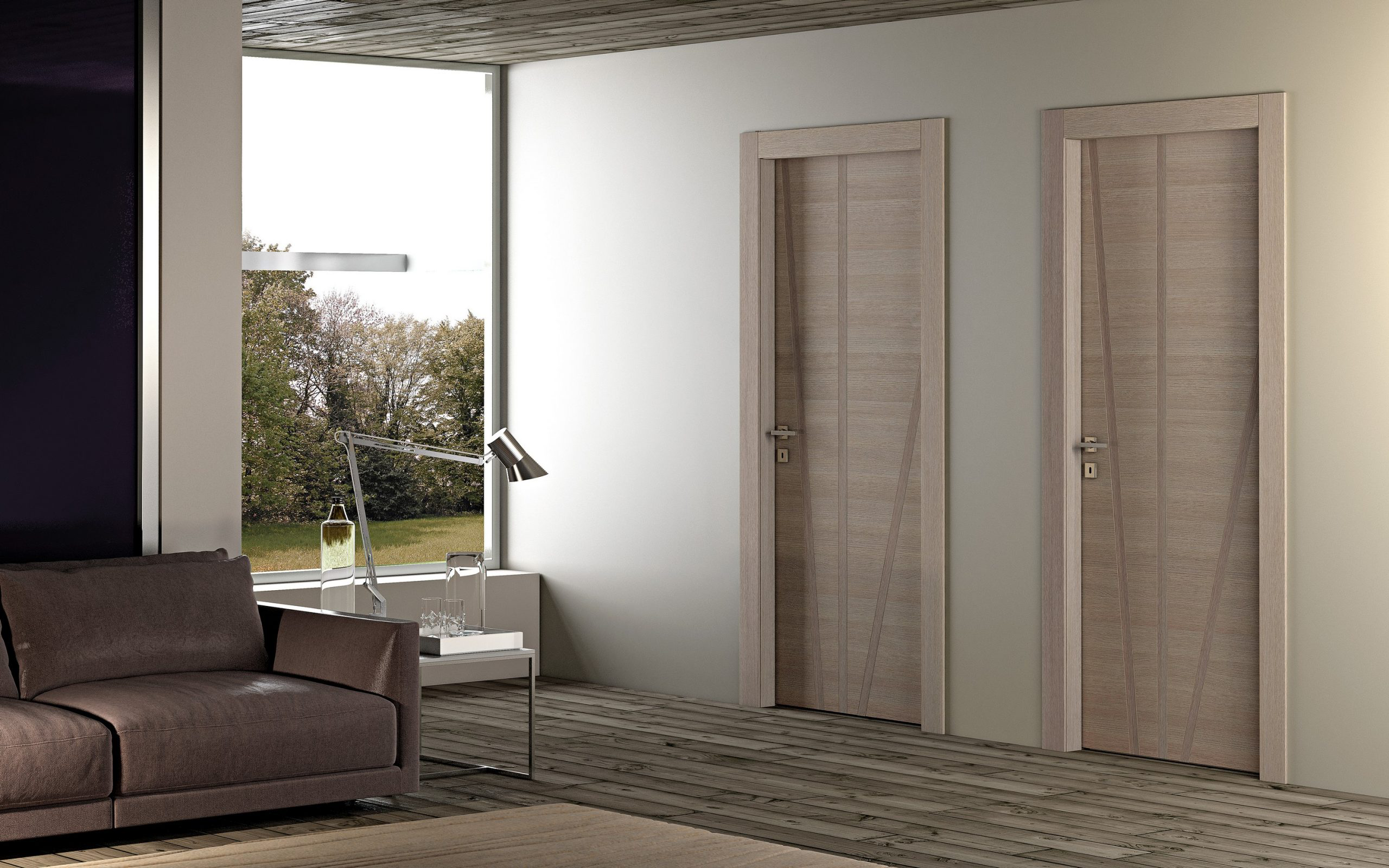
Introduction to Inside Doors
When you walk through any building, one of the first things you’ll notice is the doors. But have you ever stopped to think about the different types of doors, especially inside doors? Inside doors are not just functional items, but also essential parts of your home or office decor. These doors separate rooms, provide privacy, and help with noise control. In this section, we’ll break down what exactly inside doors are and why they play such a crucial role in any space.
What is an Inside Door?
An inside door, as the name suggests, is a door designed specifically for indoor use. Unlike exterior doors, which need to withstand weather and provide extra security, inside doors focus on function, privacy, and style within the home or office. These doors are typically made from wood, glass, or composite materials and are thinner and lighter than exterior doors. They come in various styles, including hinged, sliding, or bi-fold, each suited for different needs and spaces.
The primary purpose of an inside door is to divide rooms or spaces within a building. They can also be used to close off areas such as bathrooms, bedrooms, and closets. These doors offer a way to control the flow of a room, whether it’s for privacy, temperature regulation, or simply creating a sense of separation. Additionally, inside doors help define the overall aesthetic of your home or office, complementing other design elements like walls, furniture, and flooring.
Why Are Inside Doors Important?
Inside doors play a vital role in both the functionality and the atmosphere of any room. Let’s explore some key reasons why inside doors are essential in your home or office.
1. Privacy and Comfort:
One of the most important functions of an inside door is to provide privacy. Whether you’re in a bedroom, bathroom, or home office, having a door gives you the ability to close off a space from the rest of the building. This is especially important in shared spaces where different activities or needs might be taking place simultaneously. Inside doors also help you maintain comfort by offering separation from distractions or noise.
2. Noise Control:
Inside doors are essential for noise reduction. If you live in a busy household or work in a shared office space, noise can become a real problem. A solid core door can help muffle sounds from other rooms, creating a quieter, more peaceful environment. For example, a door in a music room or study can help keep the noise from disturbing others in the house.
3. Space Division and Organization:
Inside doors create defined spaces, helping with the organization of your home or office. They separate bedrooms from living rooms, kitchens from dining areas, and offices from recreational spaces. This allows for better organization and structure within the building, helping each room maintain its purpose and function.
4. Aesthetic Appeal:
Let’s not forget the design element. Inside doors come in many styles, colors, and materials, contributing to the overall aesthetic of your space. Whether you prefer a modern look with sleek, minimalist doors or a more traditional style with ornate woodwork, inside doors can complement the design of your home or office. They can be used to match or contrast with other design elements, like walls, furniture, and flooring, adding character and style to any room.
5. Temperature Regulation:
Inside doors also help with temperature control. By closing off rooms, doors can help retain heat in colder months or keep rooms cooler in warmer months. This can be especially important in larger homes or buildings with open floor plans, as it allows for better control of the indoor climate.
Types of Inside Door
Inside doors come in many different styles and materials, making it easier to find the perfect option for your home or office. Whether you need a door for privacy, noise control, or to enhance the look of a room, there’s a variety of choices to suit your needs.
Common Types of Inside Door
Inside doors are designed to suit different spaces and preferences. Let’s look at some of the most popular types:
1. Panel Doors:
Panel doors are classic and widely used in many homes. They feature panels that are inset into the frame, creating a structured and visually appealing look. These doors often come in various designs, from simple single-panel styles to more elaborate multi-panel configurations. Panel doors are versatile and can fit almost any room in your home, including bedrooms, kitchens, and hallways.
2. Flush Doors:
Flush doors are sleek and minimalist, with a flat surface that doesn’t have any panels or decorations. This style is perfect for modern or contemporary homes where a clean, smooth look is desired. Flush doors are often made of wood or composite materials and can easily blend into any room without drawing too much attention. They’re great for bathrooms, closets, and utility rooms.
3. Bi-Fold Doors:
Bi-fold doors are hinged and fold in half when opened. These doors are a space-saving option, making them ideal for areas where you need to maximize space, such as closets, laundry rooms, or even in smaller apartments. When open, they take up less room, making them a practical choice for tight spaces.
4. Sliding Doors:
Sliding doors are perfect for spaces where you don’t want a door swinging open into the room. These doors slide along a track and are often used in areas like closets or between rooms where you need to conserve space. They’re also great for larger rooms that require a wide opening, as they provide a seamless transition from one space to another.
5. French Doors:
French doors are made of two doors that open outward to create a large opening. They’re typically made of glass, allowing natural light to flow between rooms. French doors are ideal for creating a sophisticated, open look while maintaining a level of separation between spaces. They work beautifully in living rooms, dining rooms, or even as a stylish entryway to a home office.
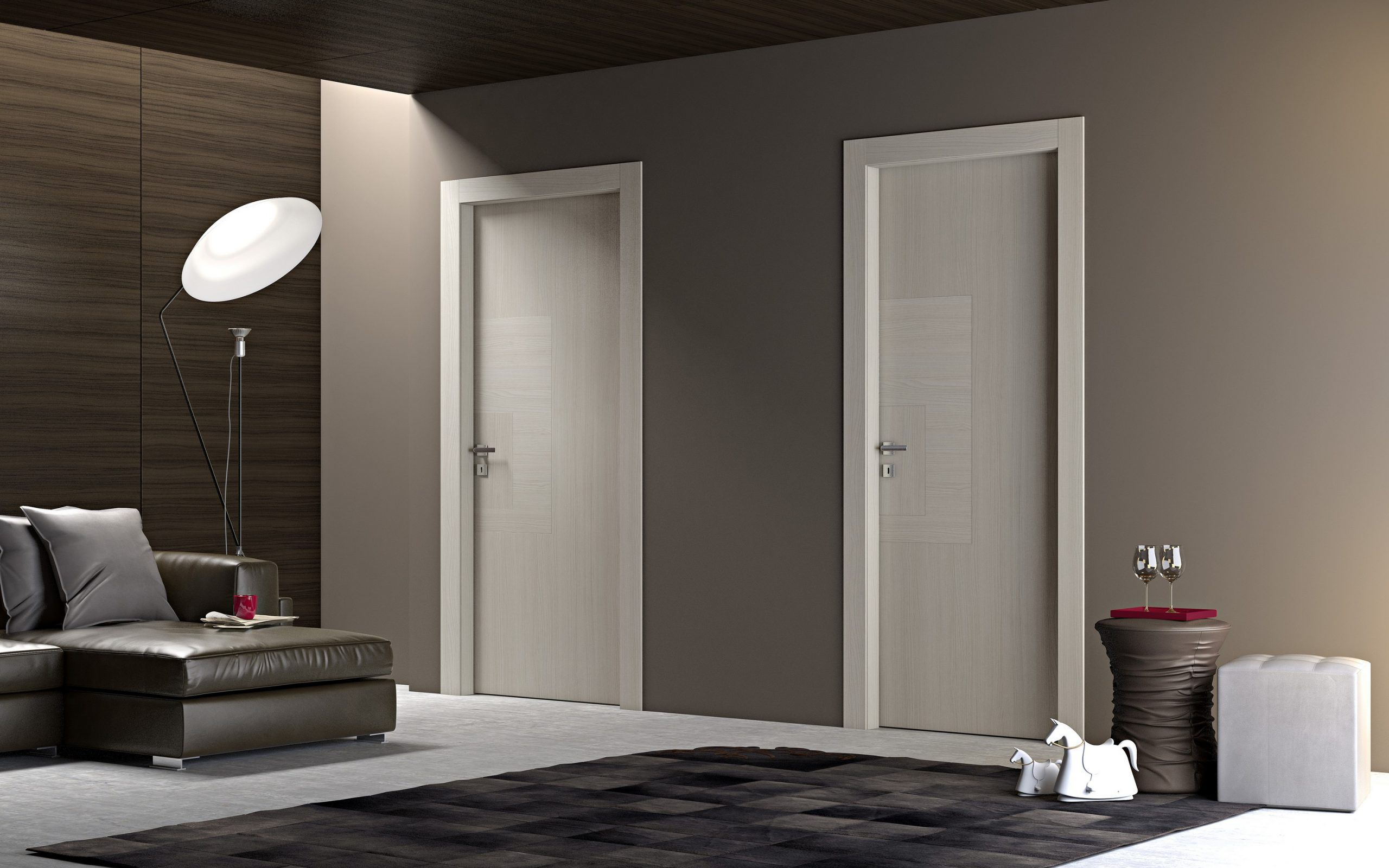
Material Choices for Inside Door
The material of your inside door plays a significant role in both its look and function. Here are some common materials to consider when choosing the best inside door for your home:
1. Wood:
Wooden doors are a popular choice due to their warmth and classic appeal. They come in various types of wood, such as oak, pine, and maple, each with unique grain patterns and colors. Wood doors are sturdy and durable, making them ideal for privacy and noise control. However, they can be more expensive than other materials, and they require regular maintenance to keep them in good condition.
2. MDF (Medium-Density Fiberboard):
MDF doors are made from compressed wood fibers and are often a more affordable alternative to solid wood doors. They’re smooth, easy to paint, and provide a uniform finish. While MDF isn’t as durable as solid wood, it is a great choice for homes on a budget. These doors are often used for flush door designs and are ideal for areas where aesthetics are more important than heavy use.
3. Glass:
Glass doors are a popular choice when you want to allow light to pass through or create an open, airy feel in a room. They can be combined with wood or metal frames to enhance their durability. Frosted glass or textured glass options provide privacy while still letting light in. Glass doors are commonly used for French doors or as decorative elements between living and dining areas.
4. Metal:
Metal doors are typically more industrial in appearance and are often used in office spaces or more utilitarian areas of the home. These doors are strong, durable, and provide excellent security. They can also be fire-rated, making them a good choice for areas like kitchens or laundry rooms. However, metal doors may not suit all interior design styles, particularly in homes with more traditional décor.
5. Composite:
Composite doors are made from a mixture of wood, metal, and other materials, providing a balance of durability and aesthetic appeal. These doors are resistant to moisture and temperature changes, making them a good option for bathrooms or other high-humidity areas. They are available in a range of styles and finishes, including wood-look options, so they can easily match your interior décor.
Choosing the Right Inside Door for Your Home
When selecting the right inside door for your home, there are several factors to consider to ensure you choose a door that fits your style, needs, and budget. Here are some tips to help you make the best choice:
1. Consider the Space:
Think about where the door will be installed. For narrow spaces or smaller rooms, a bi-fold or sliding door might be the best choice, as they save space and are easy to open and close. If you’re looking for a door for a large room, a French door can help create a more open, airy feel. For privacy and noise control, consider a solid core or wood door.
2. Match the Style of Your Home:
Our choice of door should match the overall style and theme of your home. If you have a modern or minimalist interior, a flush door with a clean design may be the best option. For a more traditional look, opt for panel doors or French doors, which offer a classic appeal. Ensure that the door you choose complements the colors, textures, and finishes in your home.
3. Think About Functionality:
Different doors serve different functions. If soundproofing or privacy is essential, choose a door with a solid core or a heavier material like wood. For rooms that need to allow light or create a connection between spaces, glass or French doors might be a better fit. If you’re in a high-humidity area, opt for a composite or metal door to resist moisture.
4. Set a Budget:
Inside doors come in a wide range of prices depending on the material, design, and brand. Wooden doors tend to be more expensive than MDF or composite doors. Consider your budget and balance quality with cost when choosing a door. Investing in higher-quality doors may pay off in the long run by enhancing the durability and aesthetic of your home.
5. Maintenance Considerations:
Think about how much time you’re willing to spend maintaining your doors. Wood doors, while beautiful, need regular care to prevent warping or damage from moisture. On the other hand, MDF and composite doors are lower maintenance and easier to clean. Consider how much time you’re willing to invest in keeping your doors in top shape.
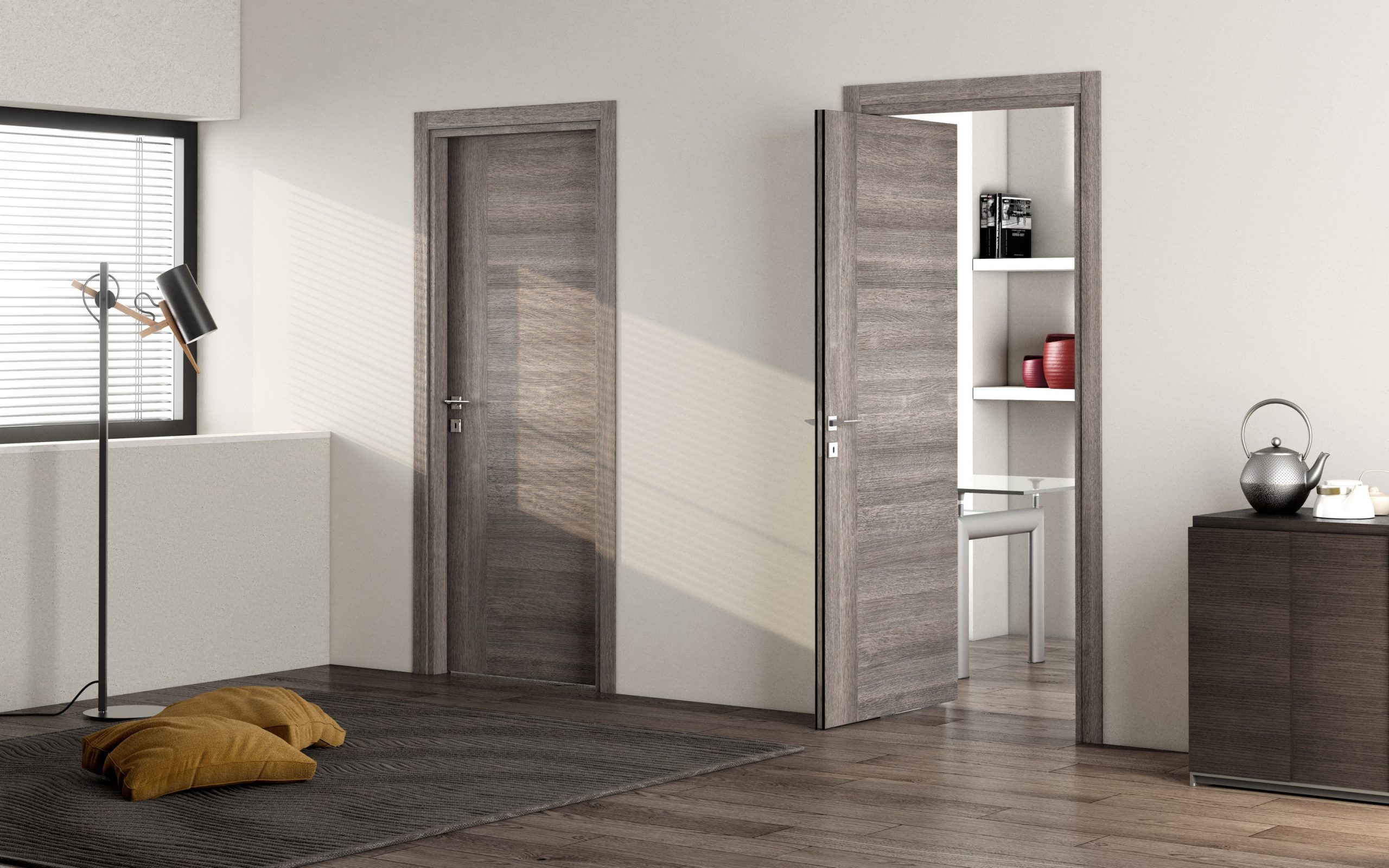
Inside Door Design Ideas
The design of your inside doors is an important aspect of home décor. It sets the tone for each room, enhances your interior style, and can even influence the atmosphere of your home. Whether you prefer sleek, modern designs or timeless traditional looks, inside doors offer endless design possibilities.
Modern Inside Door Designs
Modern inside doors are all about simplicity, clean lines, and functionality. They fit perfectly in homes that embrace minimalist or contemporary design. Here are some key features of modern inside doors:
1. Sleek and Minimalist Styles:
Modern doors often have flat, smooth surfaces with no panels or intricate details. This clean design allows the door to blend seamlessly into the surrounding walls, offering a sophisticated and understated look. Flush doors, which are completely flat with no decoration, are popular in modern interiors because they emphasize simplicity.
2. Bold Color Choices:
While traditional doors are usually wood or white, modern inside doors often come in bold, unexpected colors. Whether you choose a rich navy, matte black, or even a vibrant hue like teal or mustard, modern doors can become a statement piece in your home. These bold colors can contrast beautifully with neutral walls or complement the room’s color scheme.
3. Glass and Metal Elements:
Modern inside doors often incorporate materials like glass and metal for a sleek, industrial feel. Glass panels within a door can allow light to pass through, creating a more open and airy atmosphere while maintaining separation between spaces. Meanwhile, metal-framed doors, often with minimalist designs, are perfect for creating an industrial-chic vibe.
4. Barn Doors and Sliding Doors:
For a more trendy touch, barn doors and sliding doors are becoming increasingly popular in modern homes. These doors are typically used for closets, bathrooms, or between living spaces. They add a rustic yet modern charm and are perfect for spaces where you want to conserve space while still maintaining style.
Classic and Traditional Door Styles
While modern doors are sleek and simple, classic and traditional inside doors bring timeless elegance to your home. These doors are ideal for those who appreciate intricate designs and want to add a touch of sophistication to their spaces. Let’s look at some popular classic door styles:
1. Panel Doors:
Panel doors are the go-to choice for traditional designs. These doors feature rectangular or square panels within the frame, creating a structured and classic appearance. They can range from simple one-panel designs to more elaborate multi-panel versions, adding texture and detail to any room. Panel doors work well in living rooms, bedrooms, and dining areas, creating a refined look.
2. French Doors:
For a truly classic feel, French doors offer elegance and charm. These double doors typically have glass panels, allowing natural light to flood a room. French doors are often used between rooms to create a sense of openness and flow while still providing a visual barrier. They’re perfect for separating the living room from a dining area or creating a stylish entry to a patio or garden.
3. Wooden Doors with Decorative Details:
Traditional wooden doors often feature decorative elements such as raised panels, intricate carvings, or beadboard details. These doors are perfect for creating a more luxurious and old-world charm in your home. You can choose from different types of wood, like oak or mahogany, to add warmth and richness to any room.
4. Hinged Doors with Molding:
Classic inside doors often have detailed moldings around the edges, which enhance the door’s beauty and create a polished finish. These doors are commonly used in homes with more traditional architecture, where decorative accents play an important role in the overall design.
Custom Inside Doors
Sometimes, the perfect door for your home isn’t available off the shelf. If you’re looking for something truly unique or need a door that fits a specific need, custom inside doors are the perfect solution. Here’s why custom doors might be the right choice for your space:
1. Personalized Design:
Custom inside doors allow you to bring your exact vision to life. Whether you want a unique wood finish, a specific type of glass panel, or an intricate design, a custom door gives you the freedom to create a look that fits your style perfectly. You can also choose the size, ensuring the door fits perfectly in any space, from large, open areas to tight, tricky corners.
2. Fit for Unusual Spaces:
Some rooms in your home require doors that are not available in standard sizes. Custom doors are the perfect solution for odd-sized openings, whether you need a taller door, a narrower one, or a door that accommodates unique architectural features. This ensures a seamless fit and adds value to the overall design of the room.
3. Incorporating Special Features:
With custom doors, you can add features that aren’t available in stock doors. Whether it’s built-in storage, a sliding mechanism, or specific types of security features, a custom door allows you to create a functional piece that serves multiple purposes. For example, you can create a hidden door in a home office for additional privacy or design a door with a built-in bookshelf to save space.
4. Quality Materials and Craftsmanship:
When you choose a custom inside door, you often have access to higher-quality materials and expert craftsmanship. This ensures that your door not only looks great but will also stand the test of time. From premium wood options to durable glass and metal choices, custom doors can be made to fit your exact specifications.
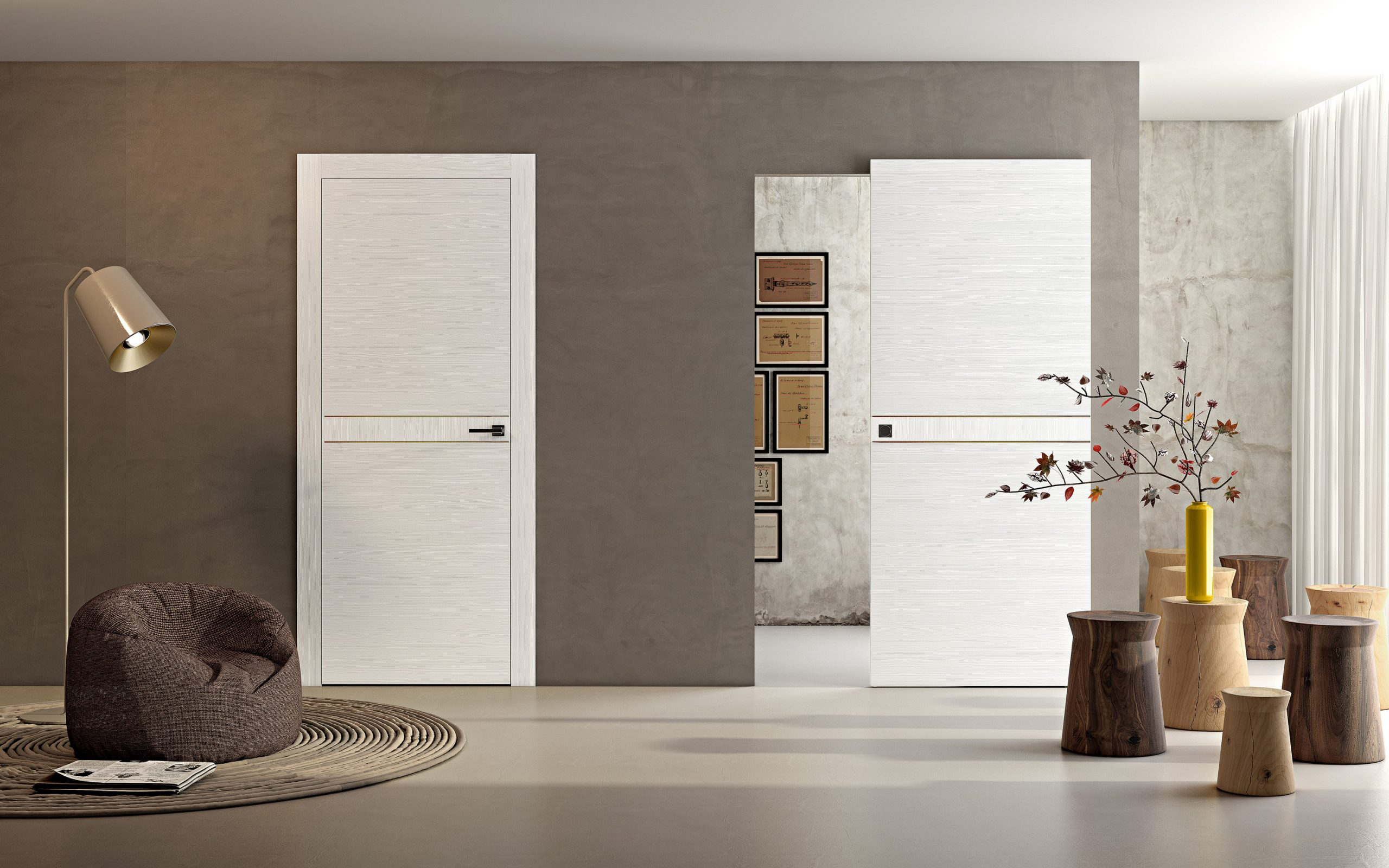
Choosing the Right Inside Door for Your Home
The right interior door is crucial for your home’s function and style. The door you choose can significantly impact the overall look of a room while providing privacy, sound control, and security. Here’s how to choose the perfect interior door for your space, and ensure it complements your home’s décor.
How to Select the Right Interior Door for Your Space?
When choosing an interior door, consider a few important factors. The size of the room, the amount of natural light, the level of privacy you need, and your home’s overall style are all key elements in making the right choice.
First, measure the space carefully to ensure the door fits properly. You’ll also want to think about the functionality of the room. For example, if you’re installing a door for a bathroom, you might need one that provides more privacy and has good sound insulation. On the other hand, for a living room or hallway, a door that allows more natural light (like a glass panel door) may be a better option.
Next, think about the door’s material. Wood, glass, composite, or metal doors each offer different advantages. Wood provides a classic look and strong sound insulation, while glass doors allow light to flow between spaces. Composite or MDF doors are great if you need a more modern or low-maintenance option. Consider the material that best fits your style and needs.
Finally, think about the door’s function. Do you want a door that swings open easily, or do you need something space-saving like a sliding or pocket door? The layout and function of the room should influence the type of door you choose.
Matching Doors with Your Home’s Decor
Interior doors are an important part of your home’s design, and choosing the right ones can elevate the entire look of a room. When matching doors with your home’s décor, it’s essential to consider style and color.
Start by considering the overall theme of your home. Solid wood doors with natural finishes like oak or walnut can add warmth and charm if you have a traditional or rustic style. For a more contemporary look, sleek, modern doors with smooth surfaces and simple lines work well. Depending on the vibe you want to create, you can choose from materials like glass, metal, or MDF.
Next, consider the color of the door. A darker wood or bold-colored door can create a striking contrast if your walls are light. A lighter-colored door may provide balance if your space is filled with darker tones. White doors are timeless and fit into almost any room, while custom colors can add a personalized touch to specific spaces.
Don’t forget about the door hardware. Handles and hinges come in many styles and finishes, from traditional brass to sleek modern matte black. The proper hardware can add a finishing touch that ties the entire room together.
Door Styles for Different Rooms
Each room in your home has unique needs, and the interior door style you choose can impact the space’s function and feel. Here are some door styles suited for specific rooms:
Living Room:
A stylish but functional door is key to the living room. French or sliding doors can open up the space, allowing natural light to flow while providing separation when needed. A traditional wooden door with elegant paneling will fit perfectly for a more classic look.
Bedroom:
Bedrooms typically require doors that offer privacy and sound insulation. A solid wood or MDF door works well, providing a sense of security and helping keep noise from traveling. For a more modern look, a door with frosted glass panels can still offer privacy while allowing light to filter through.
Kitchen:
Kitchens often benefit from doors that help divide the space while maintaining a sense of openness. Glass-panel doors keep light flow between the kitchen and dining areas. A modern sliding door can also save space and add a contemporary touch.
Home Office:
In a home office, you want a door that ensures privacy and quiet for focused work. A solid core door made of wood or composite will help reduce noise from other house parts. You may also opt for a more stylish design with a glass insert, especially if you want the room to feel open yet private.
Hallways:
Hallway doors don’t need to be as heavy-duty, but they must still be practical and fit with the surrounding décor. A simple wooden door or a sleek modern style will blend well in most hallways. Sliding doors can also be an excellent option for hallways with limited space.
Conclusion
Choosing the right interior door for your home isn’t just about picking something that looks good. You must consider the room’s function, size, and style to find a door that complements the space. Whether you’re looking for privacy, light, or space-saving options, there’s a perfect interior door for every room in your home.
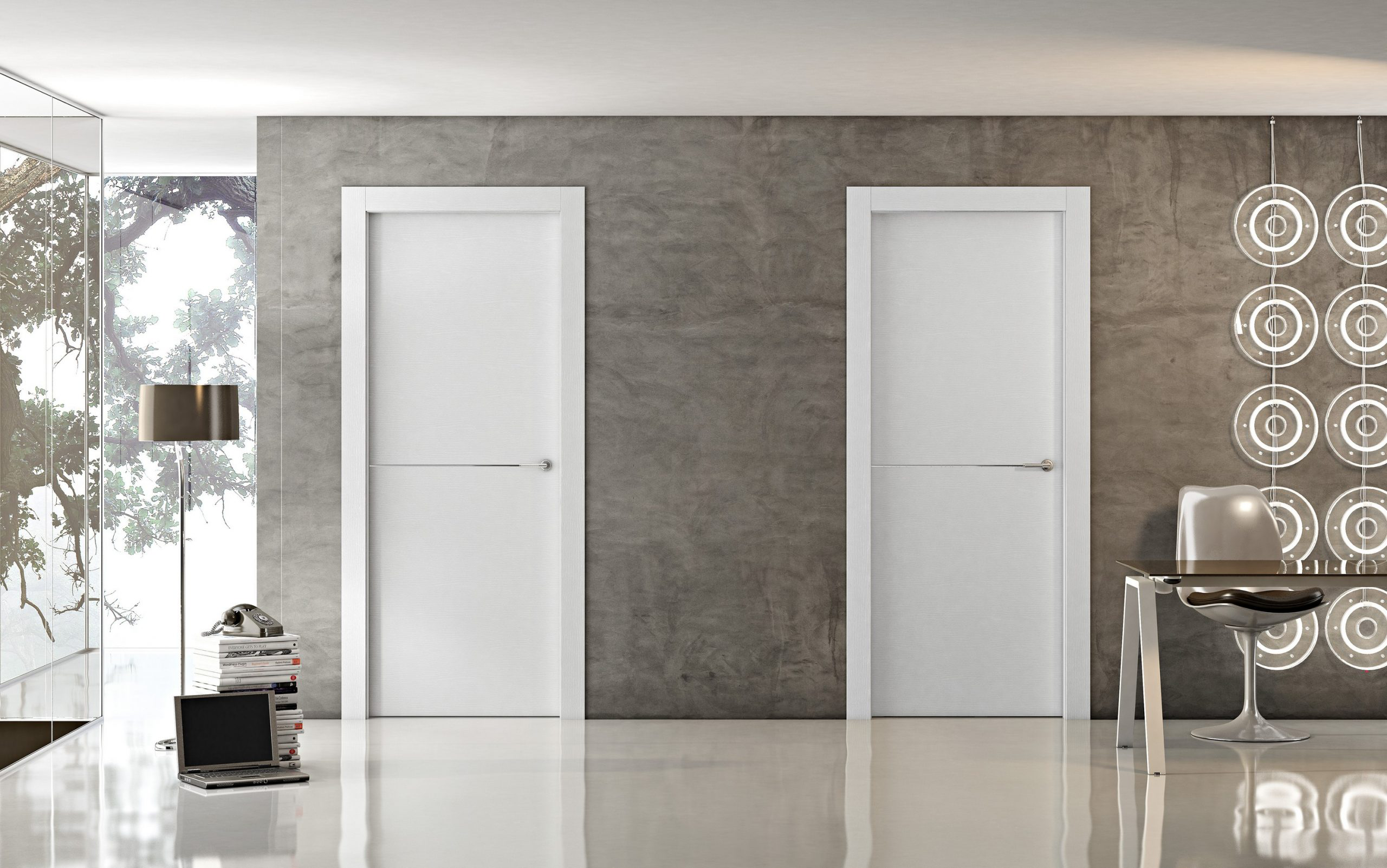
Inside Door Installation and Maintenance
Installing and maintaining your interior doors properly ensures they function well and last longer. Proper installation helps doors operate smoothly, while regular maintenance keeps them looking great and in good condition for years. Here’s a guide to help you install and maintain your interior doors.
How to Install an Interior Door?
The materials used in flat doors play a significant role in their strength, appearance, and cost. Here are the most common materials you’ll find in flat door construction:
1. Measure the Door Frame:
Before you purchase a new interior door, measure the height and width of the door frame to ensure the door fits properly. The standard door size is typically 80 inches by 30 inches, but always double-check.
2. Remove the Old Door:
If replacing an existing door, remove the old one by unscrewing the hinges. Keep the screws in case you need them for the new door.
3. Prepare the New Door:
If your new door isn’t pre-drilled for hinges or doorknobs, you must measure and drill the appropriate holes. Mark the spots where the hinges will be installed, and use a drill to make the holes.
4. Install the Hinges:
Attach the hinges to the door first. If the door frame is older or worn, you may need wood glue to secure it. Then, attach the other side of the hinge to the door frame, ensuring it’s level.
5. Hang the Door:
With the hinges in place, carefully lift the door into position within the frame. Have someone help you hold the door steady while you screw in the hinge pins. Make sure the door swings freely.
6. Adjust the Fit:
Once the door is hung, check to see if it swings smoothly and if there are any gaps. Adjust the hinges slightly if the door is sticking or not aligning properly.
7. Install the Doorknob and Hardware:
Once your door is hung correctly, install the doorknob, latch, and other hardware. Be sure to follow the manufacturer’s instructions for these steps.
Interior Door Maintenance Tips
The manufacturing process of flat doors is fairly straightforward but requires attention to detail. Here’s a basic overview of how flat doors are made:
1. Regular Cleaning:
Dust and dirt can accumulate on your door over time. Wipe your interior doors regularly with a soft cloth or microfiber towel to keep them clean. Use a wood-friendly cleaner for wooden doors that won’t damage the finish. For glass doors, a glass cleaner will work best.
2. Check for Gaps or Warping:
Wood doors can sometimes warp or shrink due to humidity changes. Check for any gaps around the edges or in the frame. If your door has shifted, adjust the hinges or add a door sweep to help seal any gaps. You may need to replace warped doors if they no longer close properly.
3. Lubricate the Hinges:
Door hinges can become squeaky or stiff over time. To avoid this, apply a small amount of lubricant or WD-40 to the hinges. This will keep the door opening and closing smoothly. Make sure to wipe off any excess lubricant to avoid staining the door.
4. Tighten Loose Hardware:
Check the doorknob, lock, and other hardware to ensure they are securely fastened. Loose hardware can make the door difficult to operate and may even cause damage over time.
5. Inspect the Seal and Caulking:
Inspect doors regularly with a seal or weatherstripping. If it starts to peel or crack, replace it to maintain energy efficiency. A good seal can also prevent dust, allergens, and noise from entering the room.
6. Refinish or Repaint:
Over time, paint on interior doors can fade, chip, or become scratched. Consider refinishing or repainting your door every few years to keep it looking fresh. Make sure to sand the surface before repainting and use a quality paint that matches the existing finish.
7. Fixing Scratches and Dents:
Small scratches and dents are common, especially on wooden or composite doors. You can use a wood filler or spackle to fill the dents for minor damage. Once dried, sand the area smooth and repaint or stain the surface.
8. Addressing Noise Issues:
If your door starts making noise when opening or closing, the problem could be the hinges, alignment, or a worn-out seal. Check for loose screws or damaged hardware and replace them if necessary. Tightening screws or adjusting the hinges might solve the issue.
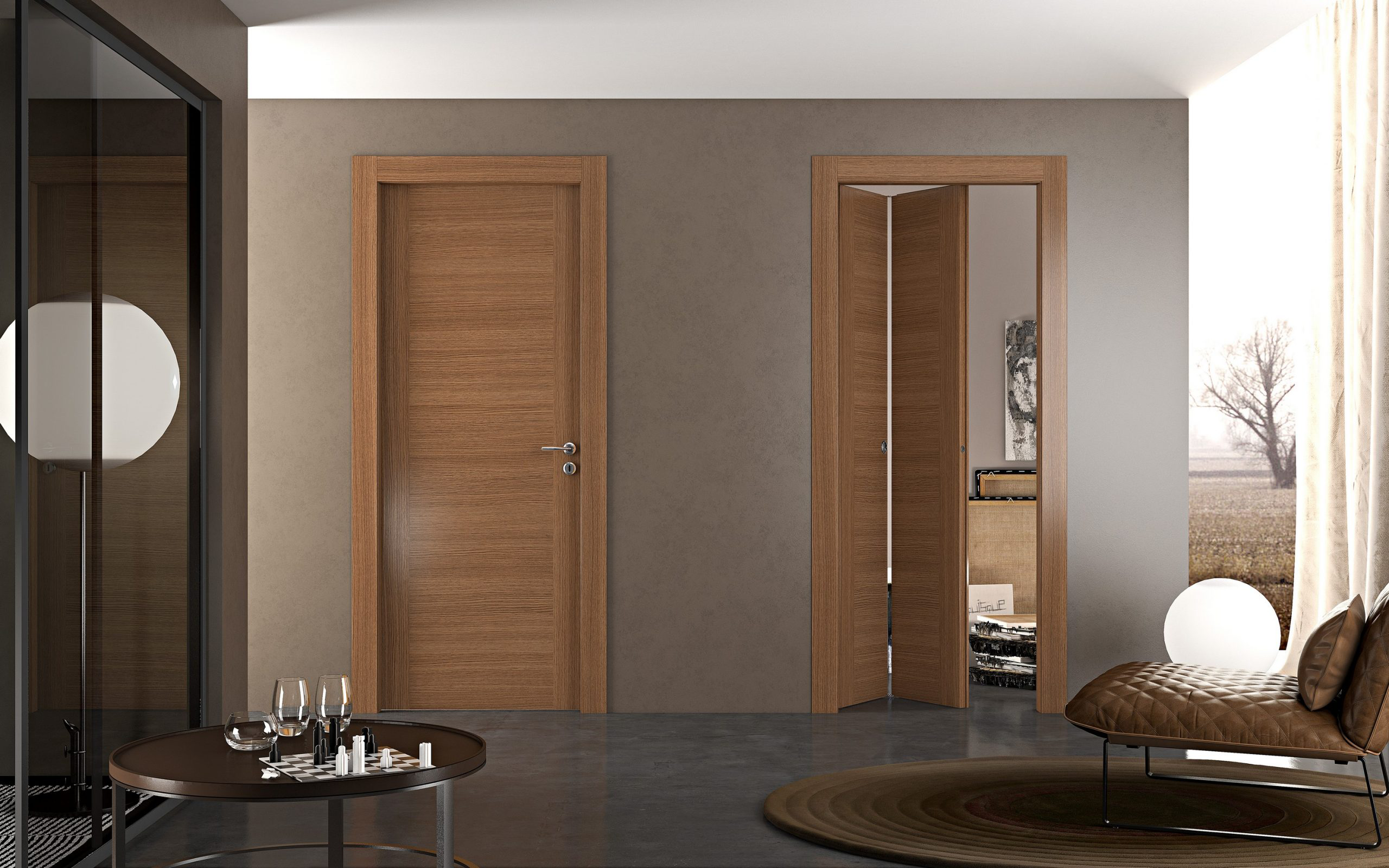
Benefits of Upgrading Your Inside Doors
Upgrading your inside doors is not just about enhancing the aesthetics of your home—it’s about improving the comfort, privacy, and functionality of your living space. Inside doors may seem like a small detail, but they play a big role in the overall feel of your home.
Enhancing Privacy and Noise Reduction
Inside doors can significantly impact the level of privacy and peace you experience in your home. When choosing or upgrading your doors, considering how they affect privacy and noise levels is essential. Here’s how upgrading your inside doors can improve both:
1. Increased Privacy:
The primary function of inside doors is to provide separation between rooms, which directly affects your privacy. Whether it’s your bedroom, home office, or bathroom, having a solid door that closes securely can help you feel more at ease. A high-quality door, particularly solid core options, offers better privacy by reducing the ability to hear sounds from other rooms. This is especially important in shared living spaces or homes with multiple family members. With upgraded inside doors, you can rest assured that your private moments are truly private.
2. Noise Reduction:
One of the best reasons to upgrade your inside doors is to minimize noise disturbances between rooms. Thin, hollow doors may not be the best at blocking sound, but solid core doors are much more effective in soundproofing. For example, if you’re working from home, a solid door can keep noise from the kids or other household members at bay. Similarly, upgrading to heavier, thicker doors can make a significant difference in bedrooms, creating a quieter, more peaceful environment for relaxation and sleep. By choosing doors designed for better sound insulation, you’ll notice a reduction in echoes and noise traveling between rooms, enhancing your overall comfort.
3. Door Types for Privacy and Noise Control:
When selecting doors for better privacy and noise control, solid core doors, or even doors with acoustic ratings, are your best options. These doors are made from dense materials that prevent sound from easily passing through. Additionally, if you’re particularly sensitive to sound, look for doors with weatherstripping or gaskets, as these features can further block noise.
Increasing Home Value with Quality Doors
When it comes to home improvements, upgrading your inside doors might not be the first thing you think of. However, quality doors can have a significant impact on the overall value of your home. Here’s how investing in high-quality inside doors can increase your home’s value:
1. First Impressions Matter:
Inside doors are one of the first elements people notice when they enter your home. Whether it’s a sleek modern door or a classic French door, the quality and design of your inside doors can make a lasting impression. Homes with high-quality doors tend to feel more luxurious and well-maintained, which can boost the perceived value of the property. Potential buyers will appreciate the attention to detail and the durability that comes with investing in quality doors.
2. Durability and Long-Term Investment:
Upgrading your inside doors with high-quality materials, such as solid wood, MDF, or even custom options, can increase the durability and longevity of your doors. This is a key selling point for potential buyers, who are likely to prefer a home with well-built, long-lasting features. Durable doors require less maintenance, meaning they’ll stay looking great for years to come, which makes your home more appealing in the long term. Additionally, solid core doors or those made of premium materials will resist wear and tear better than cheaper alternatives.
3. Better Functionality and Aesthetics:
Quality inside doors also enhance the functionality of your space. Doors that operate smoothly without squeaking or sticking, along with those that offer better soundproofing, are an upgrade potential buyers will appreciate. High-quality doors are not just visually appealing; they serve a functional purpose that makes living in the home more convenient and comfortable. Moreover, the style and design of your inside doors can elevate the overall aesthetic of the room, helping to tie everything together and create a cohesive look throughout the home.
4. Increased Appeal for Future Buyers:
If you’re planning to sell your home in the future, investing in quality inside doors now can help ensure you get a higher return on investment. Homebuyers tend to notice small details, and quality inside doors show that the home has been well cared for. Doors made from premium materials, such as wood, or with custom finishes, can set your home apart from others on the market, making it more attractive to potential buyers.
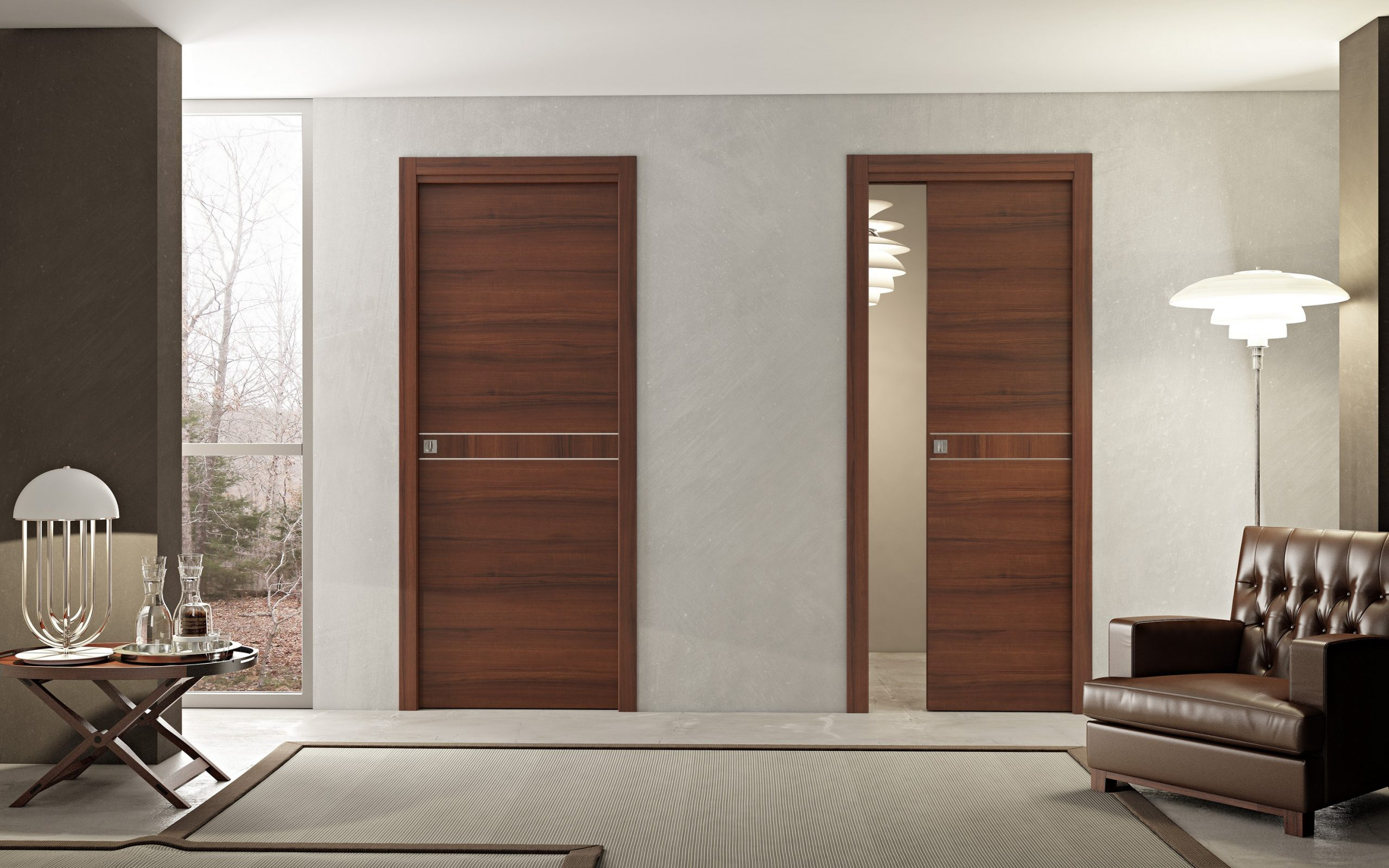
Conclusion
Choosing the right interior door is essential to enhancing the functionality, style, and comfort of your home. With a wide variety of materials, designs, and price points, understanding what factors affect your decision will help you make the best choice for your needs. Whether renovating a single room or upgrading your home, the right interior door can bring beauty, privacy, and functionality to any space.
Choosing the Right Interior Doors for Your Home
When selecting interior doors for your home, it’s important to consider both the aesthetic appeal and the practical needs of each space. Start by thinking about the room’s function. For example, a solid wood door would be a great choice if you need sound insulation. On the other hand, for a bright, open feel between rooms, glass or French doors might be a better option.
Material
Material is another crucial factor. Wood doors offer a classic look and durability, while MDF or composite doors provide an affordable and sturdy alternative. Glass doors allow natural light to flow through spaces, making them perfect for living rooms or hallways. Consider a metal or steel door if security or moisture resistance is a concern.
Size and Style
Don’t forget about size and style. A standard-sized door may be enough for most rooms, but a tailored option might be necessary if you have a custom or larger space. Your door style should also complement your home’s overall décor—whether it’s traditional, modern, or rustic.
Budget
Budget is often one of the most significant considerations. Prices for interior doors can range from budget-friendly options to high-end custom designs. Be sure to factor in installation costs, which affect your overall spending.
Installation and Maintenance
Lastly, installation and maintenance are important factors to think about. Some doors, like pocket or French doors, require more effort during installation. Regular maintenance, like cleaning and lubrication, will keep your doors functioning smoothly for years.
Summary
Considering these factors carefully, you can choose the perfect interior door for your home that fits your style, needs, and budget. Whether you’re updating a single room or planning a complete renovation, the right interior doors will significantly affect your space’s overall look and feel.
Relate FAQ
What is an inside door?
An inside door, also known as an interior door, is a door used within the home or building to separate rooms or areas. These doors are typically designed for privacy, noise reduction, and aesthetic appeal.
What materials are typically used for doors?
Inside doors are usually made from materials such as wood, MDF (medium-density fiberboard), glass, or metal. Wood is the most common choice for its aesthetic value and versatility, while MDF is often used for its affordability and ease of customization.
How do I choose the right inside door for my home?
When selecting an inside door, consider factors such as the room's style, the level of privacy you need, and the door's functionality. Popular options include solid wood doors for a classic look or glass panel doors for a modern touch.
Are there different types of inside doors?
Yes, inside doors come in several styles, including sliding doors, pocket doors, French doors, bifold doors, and standard hinged doors. The style you choose will depend on the space available and the desired look.
How can I maintain my inside doors?
Regular maintenance of inside doors includes cleaning the surface, checking for damage, and ensuring that hinges and handles are working properly. Wooden doors should be refinished or repainted periodically to keep them looking their best.
Can I paint my inside door to match my decor?
Yes, inside doors can be easily painted to match or complement your home's decor. Choose a high-quality paint for a smooth finish and long-lasting results.
Do inside doors need to be insulated?
While inside doors typically don't need insulation, doors that separate rooms with varying temperatures, such as a bathroom or laundry room, might benefit from insulation to improve energy efficiency and soundproofing.
